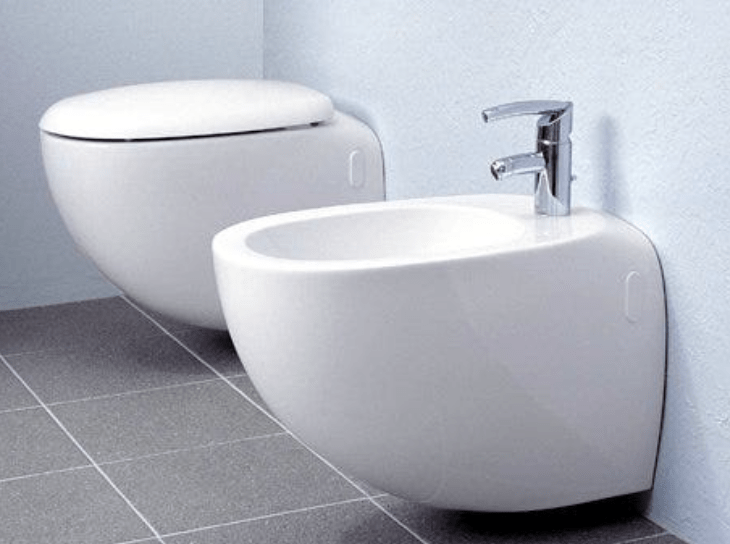Ablution, also known as wudu, is a ritual cleansing process performed by Muslims before prayers. While there are variations in the practice of ablution, it typically involves washing the face, head, hands, arms, and feet. Bidets can be used as a convenient and efficient tool for performing ablution, providing a clean and hygienic way to cleanse oneself. In this guide, we will walk you through the steps for taking ablution in a bidet, ensuring a thorough and effective cleansing process.
Key Takeaways:
- Performing ablution in a bidet offers a convenient and hygienic solution.
- Bidets provide a more effective and efficient method of cleansing compared to traditional methods.
- Proper bidet usage is essential for maintaining hygiene during ablution.
- Design considerations for bidet ablution facilities include accessibility, cleanliness, and inclusivity.
- Personal bidet towels offer a portable and eco-friendly solution for ablution on-the-go.
Importance of Proper Ablution
Proper bidet usage plays a crucial role in ensuring a hygienic and effective ablution process. Bidets offer numerous advantages over traditional methods, providing a more thorough cleansing experience. By following best practices for bidet ablution</b>, individuals can enhance their hygiene routine and maintain cleanliness.
One of the key benefits of bidet usage for ablution is the ability to clean intimate areas more effectively. Bidets utilize clean, running water, which helps to remove impurities and bacteria. This reduces the risk of infections and promotes better personal hygiene.
To maximize the benefits of bidet ablution, it is essential to maintain proper hygiene in bidet usage. This includes regularly cleaning and disinfecting the bidet to prevent the buildup of bacteria or mold. It is also important to use clean water and avoid using harsh chemicals that may irritate the skin.
Benefits of Proper Bidet Usage for Ablution:
- Thorough cleansing of intimate areas, reducing the risk of infections.
- More effective removal of impurities and bacteria compared to traditional methods.
- Promotes better personal hygiene and a cleaner feeling.
- Enhances comfort and satisfaction during the ablution process.
- Contributes to a healthier and more hygienic lifestyle.
Steps for Performing Ablution in a Bidet</h2>
Performing ablution in a bidet is a simple and effective process. Follow these steps for a thorough and hygienic cleansing:
- Start by ensuring that the bidet is properly cleaned and positioned.
- Turn on the water flow to a gentle and comfortable temperature. Adjust the water pressure according to your preference.
- Using your hands, wet your face, head, hands, and arms with the flowing water from the bidet. Make sure to cover all the required areas for ablution.
- Next, wash your feet and ankles by directing the water towards them. Ensure that the water reaches all parts of your feet for a thorough cleansing.
- Once you have completed washing each part, pause the water flow and recite the appropriate prayers or recitations, as per your religious practice.
- Finally, dry yourself gently with a clean towel or allow your body to air dry naturally.
Remember to maintain proper hygiene throughout the process by washing your hands before and after ablution. It is also important to clean the bidet regularly to prevent the buildup of bacteria or germs.
By following these simple steps, you can perform ablution in a bidet efficiently and ensure a clean and hygienic cleansing experience.
Design Considerations for Bidet Ablution Facilities
When it comes to designing bidet ablution facilities, there are several important considerations to keep in mind. The goal is to create a space that is accessible, user-friendly, and promotes good hygiene practices. Here are some key design considerations:
1. Accessibility:
It is important to ensure that facilities are accessible to all individuals, including those with disabilities or mobility challenges. This can be achieved by providing ramps or elevators for wheelchair access, ensuring that controls and handles are within reach, and allowing for proper maneuvering space within the facility.
2. Clear Instructions:
To ensure proper usage of facilities, clear instructions should be provided. This can be done through informative signage or labels that explain how to operate the bidet, adjust water temperature, and use any additional features. Clear instructions will help users feel confident and comfortable when using the facility.
3. Clean Water Source:
One of the most important aspects of facilities is the availability of a clean and reliable water source. The water used for should be clean and free from contaminants. It is also beneficial to have temperature control options, allowing users to adjust the water to their preferred temperature.
By considering these design considerations, bidet ablution facilities can be created to provide a hygienic and user-friendly experience for all individuals.
Benefits of Using Personal Bidet Towels
Personal bidet towels offer a convenient and eco-friendly solution for maintaining hygiene during ablution. These portable towels are made of quick-drying microfiber, ensuring a comfortable and effective cleansing experience. By incorporating personal bidet towels into your <b>bidet hygiene routine, you can enhance the cleanliness of your ablution process.
One of the key benefits of using personal bidet towels is their portability. These towels are compact and lightweight, making them easy to carry in your bag or purse. Whether you’re traveling, going to the gym, or attending religious gatherings, you can conveniently have a personal bidet towel on hand for ablution.
Personal bidet towels also contribute to sustainability efforts by reducing waste. Unlike disposable tissue papers, these towels are reusable and eliminate the need for single-use products. By opting for a reusable solution, you can minimize your environmental impact and promote a greener lifestyle.
Key Benefits of Personal Bidet Towels:
- Eco-friendly convenience: Portable and reusable, enabling ablution on-the-go.
- Sustainable choice: Reduces waste by eliminating the need for disposable tissue papers.
- Quick-drying microfiber: Provides comfort and ensures rapid drying for repeated use.
- Versatility: Can be used for other activities such as gym workouts or travel.
Benefits of Handheld Bidet Showers
Handheld bidet showers are a practical choice for disabled individuals as they offer more control and flexibility. These devices can be used while sitting or standing, allowing users to perform ablution comfortably. The adjustable water pressure feature enables individuals to customize the intensity of the water spray, catering to their specific needs and preferences.
“Handheld bidet showers provide a sense of independence and empowerment for disabled individuals, enabling them to perform ablution with dignity.”</span>
Moreover, handheld bidet showers are generally easy to install and operate. They can be attached to existing toilets or bidet fixtures, making them a convenient option for retrofitting existing ablution facilities. With their ergonomic design and user-friendly controls, handheld bidet showers offer a practical solution for disabled individuals seeking an accessible ablution experience.
In conclusion, bidets offer a convenient and hygienic solution for performing ablution. By following b</b>est practices for bidet ablution</b&gt;, individuals can ensure a thorough cleansing process. Proper bidet usage techniques, such as using clean, running water and maintaining personal hygiene, are essential for a comfortable and effective ablution experience.
Furthermore, considering design and accessibility considerations when designing bidet ablution facilities is crucial. Easy accessibility, clear instructions, and hygiene measures play a vital role in maintaining cleanliness and preventing the spread of germs.
Additionally, personal bidet towels provide a portable option for ablution on-the-go. These towels are not only compact and lightweight, but they also contribute to sustainability by reducing the use of disposable tissue papers.
By prioritizing hygiene and implementing the best practices for bidet ablution&lt;/b&amp;gt;, individuals can confidently perform ablution and fulfill their religious or personal requirements effectively.
FAQ
What is ablution?
Ablution, also known as wudu, is a ritual cleansing process performed by Muslims before prayers.
What does ablution involve?
Ablution typically involves washing the face, head, hands, arms, and feet.
What considerations should be kept in mind when designing bidet ablution facilities?
Bidet ablution facilities should be easily accessible, user-friendly, equipped with clean water sources, and incorporate hygiene measures such as regular cleaning and disinfection.
What are personal bidet towels?
Personal bidet towels are portable and eco-friendly towels made of quick-drying microfiber, providing comfort and convenience during ablution.
Are bidets suitable for disabled individuals?
While standard bidets may not be suitable for all disabilities, alternative options such as handheld bidet showers or bidet toilet seat attachments can provide a more accessible solution.
Source Links


